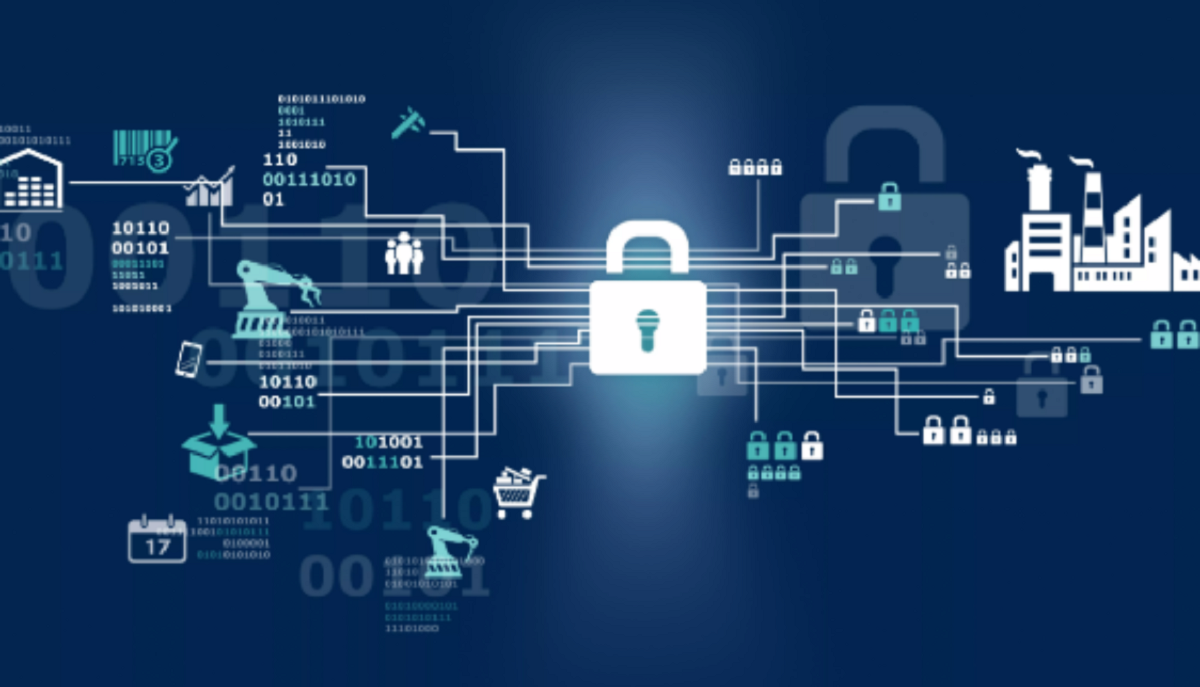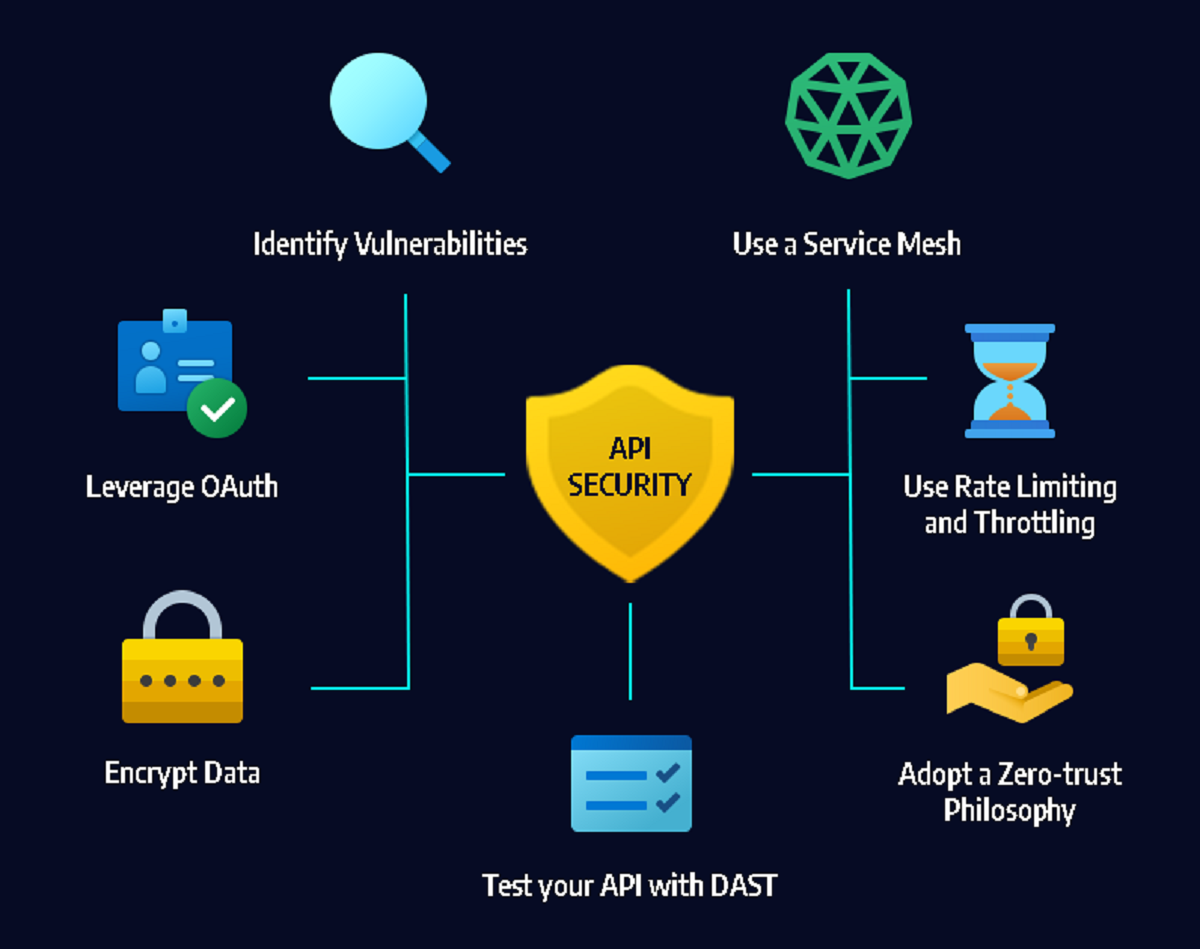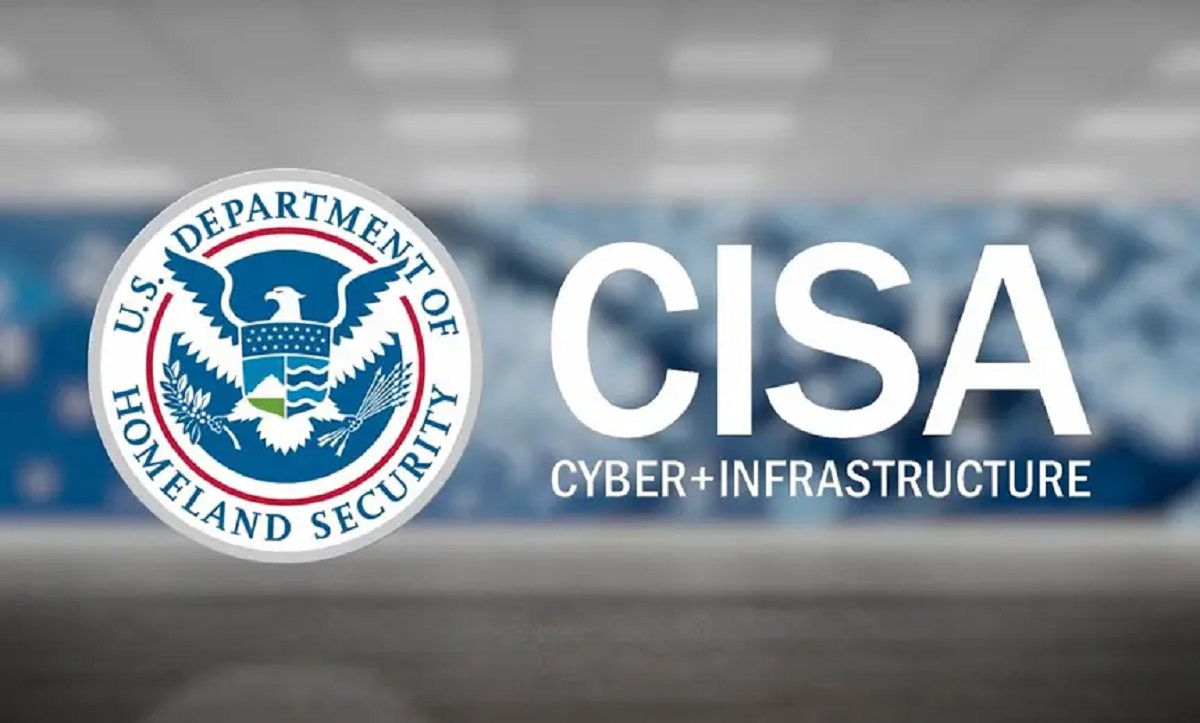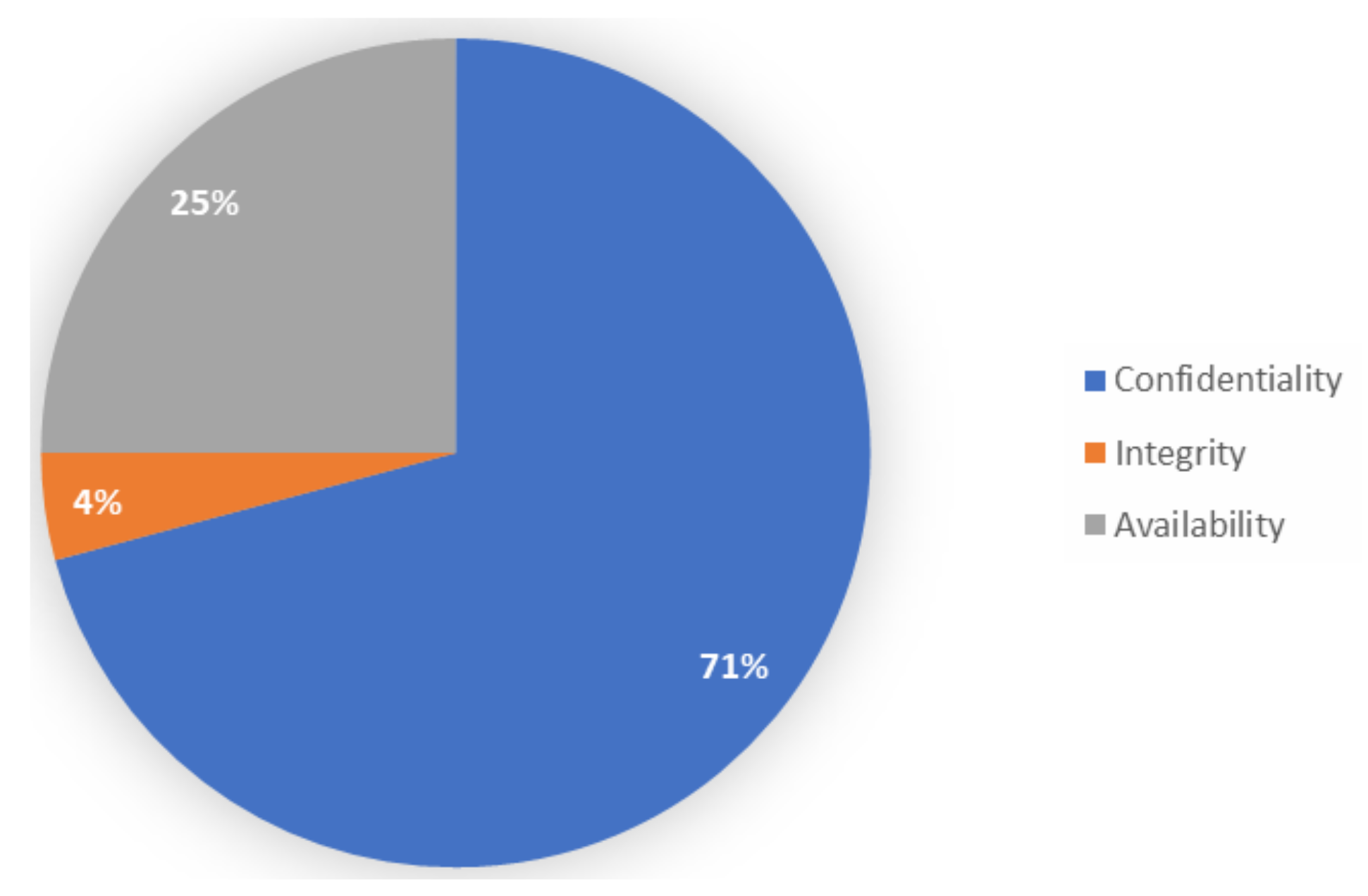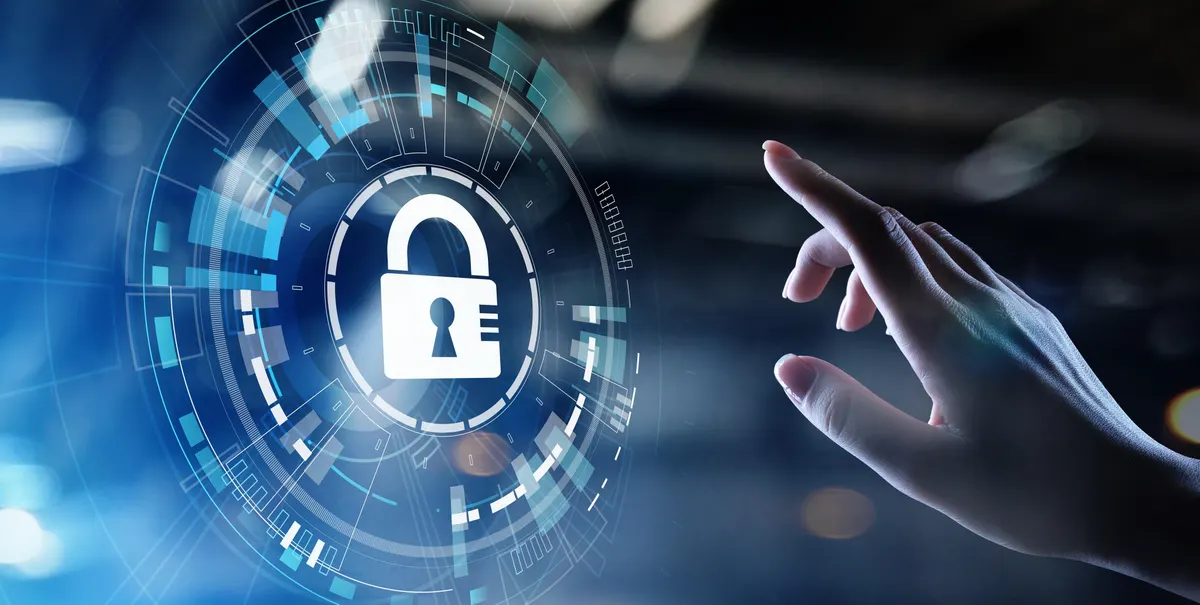Introduction
Welcome to the increasingly interconnected world of critical infrastructures and cybersecurity. In today’s digital age, our society heavily relies on critical infrastructures such as power grids, transportation systems, financial institutions, and healthcare networks. These infrastructures provide essential services that are vital to our daily lives, making their security and resilience of utmost importance.
Cybersecurity for critical infrastructures refers to the measures and practices implemented to protect these infrastructures from cyber threats and attacks. With the growing reliance on technology and digital systems, critical infrastructures face an ever-increasing risk of being targeted by malicious actors, including hackers, state-sponsored entities, and cybercriminals. The consequences of a successful cyber attack on critical infrastructures can be severe, leading to disruption of services, financial losses, and compromising the safety and well-being of individuals.
The purpose of this article is to provide an overview of what is meant by cybersecurity for critical infrastructures and why it is crucial in today’s digital landscape. We will delve into the specific threats that critical infrastructures face, the cybersecurity measures implemented to mitigate these threats, and the best practices for maintaining a robust cybersecurity posture. Additionally, we will explore the role of governments and the private sector in securing critical infrastructures and examine successful case studies of cybersecurity implementation. Finally, we will discuss the future of cybersecurity for critical infrastructures and the ongoing efforts to adapt to emerging threats and technologies.
Let us embark on a journey to understand the intricacies of cybersecurity for critical infrastructures and the imperative role it plays in safeguarding our modern way of life.
What is Critical Infrastructure?
Critical infrastructure refers to the physical and virtual systems, networks, and assets that are vital for the functioning of a society and the provision of essential services. These infrastructures serve as the backbone of our economies, national security, and public safety. They encompass a wide range of sectors, including energy, transportation, telecommunications, healthcare, water supply, financial services, and government operations.
What defines these infrastructures as “critical” is their significance in sustaining the well-being and security of a nation. The disruption or destruction of critical infrastructure can have severe consequences, affecting not only the immediate availability of essential services but also causing cascading effects on other sectors and the overall functioning of society.
Critical infrastructure can be categorized into two main types:
- Physical Infrastructure: This includes tangible assets such as power plants, dams, airports, transportation networks, hospitals, and communication systems. These physical structures and facilities play a crucial role in providing essential services and support the functioning of society.
- Virtual Infrastructure: In today’s digital era, critical infrastructure also encompasses the virtual aspects that underpin our modern systems. This includes data centers, computer networks, software applications, and information systems that are essential for the operation, management, and control of physical infrastructure.
It is important to note that critical infrastructure is not limited to individual entities or organizations but extends to interconnected networks and systems that span multiple sectors and jurisdictions. The interdependency of critical infrastructure sectors further amplifies the potential impact of any disruption or failure, making it essential to prioritize their protection and ensure their resilience.
Recognizing the importance of critical infrastructures, governments and international organizations have established regulatory frameworks, policies, and initiatives to enhance their security and resilience. Cybersecurity plays a vital role in protecting critical infrastructure, as the increasing reliance on digital technologies and interconnectivity exposes them to cyber threats that can have dire consequences.
In the next section, we will delve deeper into the significance of cybersecurity for critical infrastructures and why it has become a top priority in today’s rapidly evolving digital landscape.
The Importance of Cybersecurity for Critical Infrastructures
In today’s interconnected and digitized world, critical infrastructures are increasingly vulnerable to cyber threats and attacks. These threats pose significant risks to the availability, integrity, and confidentiality of infrastructure systems, potentially leading to severe consequences for society. This is why cybersecurity for critical infrastructures is of utmost importance.
One of the primary reasons why cybersecurity is crucial for critical infrastructures is the potential impact of a successful cyber attack. Disruptions in essential services can result in financial losses, societal unrest, and even loss of life. For example, an attack on a power grid could lead to blackouts, affecting the functioning of hospitals, transportation systems, and other vital services.
Critical infrastructures are attractive targets for malicious actors due to the immense economic, social, and political impact that can be achieved through their compromise. Cyber criminals, hackers, terrorist groups, and state-sponsored actors have all demonstrated a keen interest in targeting critical infrastructures for various purposes, including financial gain, espionage, disruption, and sabotage.
Moreover, critical infrastructures are increasingly interconnected, relying on complex networks and interdependencies. This interconnectedness creates a vulnerability cascade, wherein a single successful attack on one infrastructure can have a domino effect, spreading disruption across multiple sectors. For example, an attack on a transportation system could impact the supply chain, leading to shortages of essential goods and services.
Another significant concern is the evolving nature of cyber threats. Attackers are constantly adapting and developing new methods to exploit vulnerabilities in critical infrastructure systems. This requires a proactive and dynamic approach to cybersecurity to stay ahead of the threat landscape.
Cybersecurity for critical infrastructures involves a range of protective measures to prevent, detect, respond to, and recover from cyber attacks. These measures include implementing robust access controls, network segmentation, encryption, intrusion detection systems, firewalls, and incident response plans. Regular vulnerability assessments, security audits, and employee training are also critical for maintaining a strong security posture.
Furthermore, the integration of cybersecurity into the design and development of critical infrastructures is vital. By incorporating security considerations from the early stages of infrastructure planning, potential vulnerabilities can be identified and mitigated before deployment, reducing the risk of exploitation.
The importance of cybersecurity for critical infrastructures is not only recognized by governments and organizations, but also by international bodies and regulatory agencies. Various standards and guidelines have been developed to provide a framework for securing critical infrastructures and ensuring the implementation of best practices.
In the following sections, we will explore the specific threats faced by critical infrastructures and the cybersecurity measures implemented to mitigate them.
The Threats to Critical Infrastructures
Critical infrastructures face a range of threats in the digital landscape. Understanding these threats is crucial for developing effective cybersecurity measures to protect these essential systems.
1. Cyber Attacks: One of the most significant threats to critical infrastructures is cyber attacks. These attacks can take various forms, including malware infections, DDoS (Distributed Denial of Service) attacks, ransomware, and phishing attempts. The aim of these attacks is typically to gain unauthorized access, disrupt services, steal sensitive information, or cause physical damage.
2. Advanced Persistent Threats (APTs): APTs are sophisticated and targeted cyber attacks carried out by state-sponsored actors or advanced criminal organizations. These attacks involve long-term surveillance, stealthy infiltration, and persistence within the targeted infrastructure. APTs often involve multiple stages and advanced techniques to avoid detection and exploit vulnerabilities.
3. Insider Threats: The threat posed by insiders, such as employees or contractors with authorized access to critical infrastructure systems, should not be underestimated. Insider threats can occur due to intentional malicious actions, unintentional errors, or negligence. Insiders can abuse their privileges to steal data, disrupt operations, or provide unauthorized access to external adversaries.
4. Supply Chain Vulnerabilities: Critical infrastructures rely on a complex network of suppliers, vendors, and third-party service providers. Any compromise within this supply chain can introduce vulnerabilities and increase the risk to the infrastructure. Attackers may exploit weak links in the supply chain to gain unauthorized access, inject malicious code, or compromise the integrity of software and hardware components.
5. Physical Security Breaches: While cyber threats often come to mind, physical security breaches can also pose a significant risk to critical infrastructures. Physical attacks, such as trespassing, theft, vandalism, or sabotage, can disrupt operations and compromise the integrity of infrastructure systems.
6. Emerging Threats: As technology evolves, new threats continue to emerge. For example, the proliferation of IoT (Internet of Things) devices in critical infrastructures introduces additional attack vectors. The vulnerabilities in these devices can be exploited to gain access to infrastructure systems, leading to potential disruption or compromise.
Addressing the threats to critical infrastructures requires a comprehensive and multi-layered approach to cybersecurity. This involves implementing strong access controls, regularly updating and patching systems, conducting vulnerability assessments, enhancing threat intelligence capabilities, and fostering a culture of security awareness among employees.
In the next section, we will explore the cybersecurity measures and best practices that are essential for safeguarding critical infrastructures from these threats.
Understanding the Cybersecurity Measures for Critical Infrastructures
To effectively protect critical infrastructures from cyber threats, a multi-layered approach to cybersecurity is essential. This approach involves implementing a range of preventive, detective, and responsive measures to mitigate vulnerabilities and respond to incidents.
1. Access Controls: Strong access controls are crucial for safeguarding critical infrastructures. This includes implementing strict authentication and authorization mechanisms to ensure only authorized personnel can access sensitive systems and data. Multi-factor authentication, role-based access control, and privileged access management can help prevent unauthorized access.
2. Network Segmentation: Segregating infrastructure networks into separate segments or zones can limit the potential impact of an attack. By compartmentalizing critical systems, an attacker’s ability to move laterally within the infrastructure can be constrained, reducing the potential for widespread disruption.
3. Encryption: Encrypting sensitive data while in transit and at rest is essential for maintaining its confidentiality and integrity. This can help protect against eavesdropping, data tampering, and unauthorized access. Encryption protocols, such as SSL/TLS for network communications and disk encryption for storage, are commonly used to achieve this protection.
4. Intrusion Detection and Prevention Systems (IDS/IPS): IDS/IPS solutions monitor network traffic and detect potential intrusion attempts or suspicious activities. These systems can act as an early warning system, alerting security personnel to potential threats and enabling swift response and mitigation measures.
5. Firewalls: Firewalls act as a barrier between external networks and critical infrastructure systems. They control and monitor incoming and outgoing network traffic based on predefined security rules. By filtering out malicious or unauthorized traffic, firewalls provide an additional layer of defense against cyber attacks.
6. Incident Response Plan: Having a well-defined and tested incident response plan is vital for responding to cyber security incidents effectively. This plan outlines the necessary steps to be taken in the event of a breach or attack, ensuring a coordinated and efficient response. It includes activities such as incident identification, containment, eradication, recovery, and post-incident analysis.
7. Regular Patching and Updates: Keeping software, firmware, and hardware up to date with the latest security patches is crucial. Many cyber attacks exploit known vulnerabilities in outdated systems. Regular updates and security patches help mitigate these risks by addressing identified vulnerabilities and improving the overall security posture.
8. Security Awareness and Training: Human factors play a significant role in cybersecurity. Training employees and raising awareness about cyber threats, safe online practices, and the importance of adhering to security policies and procedures are essential. This helps ensure that employees are knowledgeable about security best practices and are proactive in identifying and reporting potential vulnerabilities.
9. Continuous Monitoring: Implementing continuous monitoring mechanisms allows for real-time detection and response to potential threats. Security teams can identify and analyze anomalous behavior or suspicious activities within the infrastructure, enabling proactive mitigation before a full-blown attack occurs.
Combining these cybersecurity measures and best practices helps strengthen the security posture of critical infrastructures. However, it is important to note that security is an ongoing process that requires regular evaluation, testing, and adaptation to address emerging threats and changing technologies.
In the next section, we will explore the best practices organizations should follow to ensure effective cybersecurity measures in protecting critical infrastructures.
Best Practices for Ensuring Cybersecurity in Critical Infrastructures
Protecting critical infrastructures from cyber threats requires a proactive and comprehensive approach to cybersecurity. The following best practices can help organizations ensure the security and resilience of their critical infrastructure systems.
1. Risk Assessment: Conduct regular risk assessments to identify vulnerabilities, evaluate potential threats, and prioritize security measures. This enables organizations to allocate resources effectively and focus on addressing the most critical risks.
2. Security by Design: Integrate cybersecurity considerations into the design and development of critical infrastructures from the outset. This includes incorporating security controls, implementing secure coding practices, and conducting thorough security reviews during the development process.
3. Employee Training: Continuously educate and train employees on cybersecurity best practices, emerging threats, and response procedures. Promote a culture of security awareness and encourage employees to report suspicious activities or potential vulnerabilities promptly.
4. Incident Response Planning: Develop and regularly update an incident response plan that outlines the necessary steps to be taken in the event of a security breach or cyber attack. Test the plan regularly to ensure its effectiveness, and involve relevant stakeholders to enhance coordination and response capabilities.
5. Regular Updates and Patch Management: Keep software, operating systems, and firmware up to date with the latest security patches and updates. Regularly review and monitor vulnerabilities and prioritize patches based on criticality, applying them promptly to mitigate potential risks.
6. Network Segmentation: Implement network segmentation to compartmentalize critical infrastructure systems and reduce the impact of a potential breach. Segmenting the infrastructure into separate zones with stricter access controls can mitigate lateral movements and limit the extent of an attack.
7. Incident Monitoring and Response: Deploy robust monitoring tools and security information and event management (SIEM) systems to detect and respond to potential security incidents in real-time. Monitor network traffic, system logs, and user activity to identify and respond swiftly to any anomalies or suspicious behavior.
8. Supplier and Vendor Risk Management: Assess and monitor the cybersecurity practices of third-party suppliers and vendors who have access to critical infrastructure systems. Establish contractual agreements that require adherence to security standards, regular audits, and continuous monitoring of their security posture.
9. Regular Testing and Evaluation: Conduct regular penetration testing, vulnerability assessments, and security audits to identify weaknesses and validate the effectiveness of security controls. Analyze the results and implement necessary remediation measures to strengthen the overall security posture.
10. Information Sharing: Collaborate with peer organizations, government agencies, and industry groups to share information about emerging threats, attack trends, and best practices. Participate in information sharing initiatives to collectively improve the security and resilience of critical infrastructures.
By incorporating these best practices into their cybersecurity strategy, organizations can enhance the protection of their critical infrastructures and reduce the risk of cyber attacks. However, it is essential to remain vigilant and adapt to the evolving threat landscape to maintain a robust security posture.
In the next section, we will explore the cybersecurity standards and regulations that govern the protection of critical infrastructures.
Cybersecurity Standards and Regulations for Critical Infrastructures
To ensure the effective protection of critical infrastructures, governments and regulatory bodies have established cybersecurity standards and regulations. These frameworks provide guidelines and requirements for organizations responsible for critical infrastructures to improve their security posture and mitigate cyber risks.
One notable cybersecurity standard is the NIST Cybersecurity Framework developed by the National Institute of Standards and Technology (NIST) in the United States. This framework provides a flexible, risk-based approach for managing and improving cybersecurity. It consists of five core functions: Identify, Protect, Detect, Respond, and Recover, which help organizations assess their current security posture and develop a roadmap for enhancing their cybersecurity capabilities.
The International Organization for Standardization (ISO) has also developed several standards specifically designed for critical infrastructure security. ISO/IEC 27001 and ISO/IEC 27002 provide comprehensive guidelines for information security management systems and best practices for implementing security controls. These standards can be leveraged by organizations to establish a robust cybersecurity framework for protecting critical infrastructures.
Regulatory bodies, such as the European Union Agency for Cybersecurity (ENISA) and the Federal Energy Regulatory Commission (FERC) in the United States, have developed specific regulations to address the unique cybersecurity challenges faced by critical infrastructures.
In the United States, the Critical Infrastructure Protection (CIP) standards established by FERC require electric utilities to implement comprehensive cybersecurity measures to protect the Bulk Electric System (BES) from cyber threats. These standards outline requirements for risk assessment, incident response planning, access controls, and information protection.
ENISA, on the other hand, provides guidance and best practices for securing critical infrastructures across the European Union. Their efforts include developing risk management frameworks, incident response capabilities, and establishing collaboration networks to enhance the resilience of critical infrastructures.
Another noteworthy initiative is the EU Directive on Security of Network and Information Systems (NIS Directive), which requires EU member states to implement robust cybersecurity measures and incident reporting mechanisms for operators of essential services, including critical infrastructures.
It is crucial for organizations responsible for critical infrastructures to stay abreast of these cybersecurity standards and regulations. Compliance with these requirements not only helps organizations meet legal obligations but also enhances their overall cybersecurity posture.
While these standards and regulations provide a foundation for cybersecurity, it is important to note that they may not cover every specific aspect relevant to all critical infrastructure sectors. Organizations must assess their unique risks and tailor their cybersecurity approach to address sector-specific challenges.
In the next section, we will explore the roles of governments and the private sector in securing critical infrastructures.
The Role of Government and Private Sector in Securing Critical Infrastructures
Ensuring the security of critical infrastructures requires a collaborative effort between the government and the private sector. Both play crucial roles in securing these essential systems and protecting them from cyber threats.
The government’s role in securing critical infrastructures includes:
1. Regulation and Legislation: Governments establish regulations and laws that mandate cybersecurity requirements for organizations responsible for critical infrastructures. These regulations outline security standards, incident reporting requirements, and penalties for non-compliance. By setting clear expectations and enforcing compliance, governments incentivize organizations to prioritize cybersecurity.
2. Intelligence and Information Sharing: Government agencies are responsible for gathering intelligence on cyber threats and sharing this information with organizations responsible for critical infrastructures. By providing timely and actionable threat intelligence, governments enable organizations to proactively identify and respond to potential risks.
3. Coordination and Collaboration: Governments serve as a central coordinating body, bringing together various stakeholders, including industry experts, regulatory agencies, and law enforcement agencies. Through partnerships and collaboration, governments can facilitate information sharing, best practices, and joint efforts to address cybersecurity challenges affecting critical infrastructures.
4. Funding and Research: Governments allocate funding and support research and development initiatives to enhance cybersecurity capabilities specifically targeted at critical infrastructures. This includes investments in innovative technologies, workforce training, and initiatives to address emerging cyber threats.
The private sector also plays a critical role in securing critical infrastructures:
1. Implementation of Cybersecurity Measures: Organizations responsible for critical infrastructures are at the forefront of implementing cybersecurity measures to protect their systems. This includes establishing robust security policies, implementing technical controls, conducting regular risk assessments, and maintaining incident response capabilities. Private sector organizations adapt and respond to evolving threats using their industry expertise and technical knowledge.
2. Adoption of Best Practices: Private sector organizations adopt industry best practices and standards, such as NIST Cybersecurity Framework and ISO/IEC 27001, to guide their cybersecurity efforts. Implementing these frameworks helps organizations establish effective security controls and better protect their critical infrastructure systems.
3. Training and Education: Private sector organizations invest in cybersecurity training and education for their employees to enhance their awareness and understanding of cyber threats. By promoting a strong security culture and developing a skilled workforce, organizations can effectively identify and respond to potential cyber risks.
4. Collaboration with Government: Private sector organizations collaborate with government agencies and industry associations to share information, best practices, and threat intelligence. These collaborative efforts help create a more robust and comprehensive cybersecurity ecosystem for critical infrastructures.
By combining the expertise, resources, and efforts of both the government and the private sector, critical infrastructures can benefit from a holistic and integrated approach to cybersecurity. Collaboration and information sharing are paramount in protecting these infrastructures from evolving cyber threats.
In the next section, we will explore successful case studies of cybersecurity implementation in critical infrastructures.
Case Studies: Successful Cybersecurity Implementation in Critical Infrastructures
Several notable case studies highlight successful cybersecurity implementation in critical infrastructures, demonstrating the effectiveness of well-designed security measures and practices.
1. Estonian X-Road: Estonia’s X-Road is a secure data exchange platform that connects various governmental and private sector organizations. It ensures secure data transmission, authentication, and authorization, enabling seamless and secure communication between different systems. The X-Road platform has been instrumental in safeguarding critical infrastructures and protecting sensitive government and citizen data from cyber threats.
2. New York Power Authority: The New York Power Authority (NYPA) is a state-owned power organization responsible for supplying electricity to millions of people. NYPA implemented a comprehensive cybersecurity program to protect its critical infrastructures. This includes continuous monitoring, threat intelligence integration, and incident response capabilities. The program has enhanced the security of NYPA’s power systems and mitigated potential cyber risks.
3. Singapore Cybersecurity Act: The Cybersecurity Act of Singapore was implemented in 2018 to strengthen the country’s cybersecurity capabilities, particularly for critical infrastructures. The act establishes the framework for proactive cybersecurity measures, including regular risk assessments, incident reporting, and compliance audits. It has significantly improved cybersecurity readiness and resilience across critical infrastructures in Singapore, enhancing protection against cyber threats.
4. Israel’s Water Sector: Israel’s Water Authority implemented a comprehensive cybersecurity strategy to protect the country’s water supply systems. This included monitoring and analyzing network traffic, implementing secure access controls, and developing incident response plans. As a result, Israel’s water infrastructure has remained secure and resilient, successfully defending against cyber attacks.
5. Swiss Public Transport Systems: The Swiss public transport systems have implemented robust cybersecurity measures to protect their operations from cyber threats. These measures include network segmentation, data encryption, multi-factor authentication, and regular security audits. The proactive cybersecurity approach has ensured the continued availability and reliability of public transport services, safeguarding the critical infrastructure and public safety.
These case studies demonstrate the importance of implementing a comprehensive cybersecurity strategy tailored to the unique challenges of critical infrastructures. The success of these initiatives stems from a combination of technical controls, risk mitigation measures, incident response capabilities, and a proactive approach to cybersecurity.
In the next section, we will explore the future of cybersecurity for critical infrastructures and the ongoing challenges and advancements in this field.
The Future of Cybersecurity for Critical Infrastructures
The landscape of cybersecurity for critical infrastructures is constantly evolving, and the future holds both new challenges and advancements in technology and strategies. Several key trends and considerations will shape the future of cybersecurity for critical infrastructures.
1. Advanced Threats: The sophistication and complexity of cyber threats will continue to rise. Organizations responsible for critical infrastructures must stay ahead of cybercriminals and state-sponsored entities by investing in advanced threat intelligence capabilities, machine learning, and AI-powered technologies to detect and respond to emerging threats effectively.
2. Internet of Things (IoT): The proliferation of IoT devices in critical infrastructures introduces new attack vectors and risks. The future will require robust security measures to protect IoT devices, secure data transmission, and ensure the integrity and availability of critical systems. Implementing stringent access controls, monitoring for IoT vulnerabilities, and adopting security-by-design principles will be essential.
3. Cloud Computing: The adoption of cloud computing in critical infrastructures brings numerous benefits but also raises cybersecurity concerns. Organizations must carefully design and implement strong security controls and encryption mechanisms to protect sensitive data stored and processed in the cloud. Additionally, secure virtual network architectures and robust identity and access management solutions will be essential for safeguarding systems and data.
4. Artificial Intelligence (AI): As organizations increasingly leverage AI and machine learning technologies to enhance decision-making and automate processes, securing these AI systems will become critical. Protecting AI models from adversarial attacks, ensuring the integrity of training data, and monitoring AI systems for anomalous behavior will be vital for maintaining the security of critical infrastructures.
5. Collaboration and Information Sharing: The future of cybersecurity for critical infrastructures relies heavily on collaboration and information sharing among organizations, government agencies, and industry sectors. Establishing trusted partnerships, sharing threat intelligence, and jointly addressing common cybersecurity challenges will be crucial to stay ahead of evolving threats.
6. Regulation and Compliance: Governments will likely continue to refine and expand regulations and compliance requirements for organizations responsible for critical infrastructures. This includes stricter mandates for incident reporting, privacy protection, and the adoption of specific cybersecurity standards. Organizations need to stay abreast of these regulations and proactively align their cybersecurity practices to ensure compliance.
7. Cybersecurity Workforce: The demand for skilled cybersecurity professionals will continue to grow. Organizations will need to invest in recruiting and training cybersecurity experts with specialized knowledge in critical infrastructure protection. Collaboration between academia, government, and the private sector is essential to foster a strong cybersecurity workforce and bridge the cybersecurity skills gap.
8. Resilience and Recovery: In addition to prevention, organizations must focus on building resilience and establishing robust recovery mechanisms. This includes developing backup systems, disaster recovery plans, and incident response capabilities to minimize the impact of cyber attacks and ensure the swift restoration of critical infrastructure services.
In summary, the future of cybersecurity for critical infrastructures will rely on adaptive and proactive strategies that continuously evolve to address emerging threats and technological advancements. Through collaboration, technological innovation, and a commitment to strong cybersecurity practices, critical infrastructures can maintain their resilience and protect the services they provide.
Conclusion
Cybersecurity for critical infrastructures plays a vital role in safeguarding the functioning, security, and resilience of essential systems that support our modern way of life. The increasing interconnectivity and reliance on digital technologies have made critical infrastructures attractive targets for cyber threats and attacks.
In this article, we have explored various aspects of cybersecurity for critical infrastructures, including the definition and importance of critical infrastructures, the threats they face, and the cybersecurity measures implemented to protect them. We have also discussed best practices, cybersecurity standards and regulations, and the roles of both the government and the private sector in securing critical infrastructures.
Successful case studies have highlighted the effectiveness of well-designed cybersecurity measures in safeguarding critical infrastructures, demonstrating the importance of continuous improvement and adaptation to emerging threats. Furthermore, we explored the future of cybersecurity for critical infrastructures, emphasizing the need for advanced threat intelligence, collaboration, and resilience-building strategies.
Maintaining strong cybersecurity for critical infrastructures requires a holistic approach that combines people, processes, and technology. It demands ongoing vigilance, regular risk assessments, employee training, and the adoption of industry best practices. To enhance cybersecurity, governments, regulatory bodies, and the private sector must collaborate, share information, and work together to address the evolving cyber threat landscape.
As technology continues to advance, the challenges and requirements for securing critical infrastructures will evolve alongside them. Organizations must stay proactive in adapting to these changes, embracing emerging technologies and strategies while continuously reassessing and strengthening their security posture.
By prioritizing cybersecurity, critical infrastructures can mitigate risks, protect against cyber threats, and maintain the uninterrupted provision of essential services. The collective efforts of governments, organizations, and individuals are crucial in ensuring the secure and resilient future of critical infrastructures in our interconnected world.







